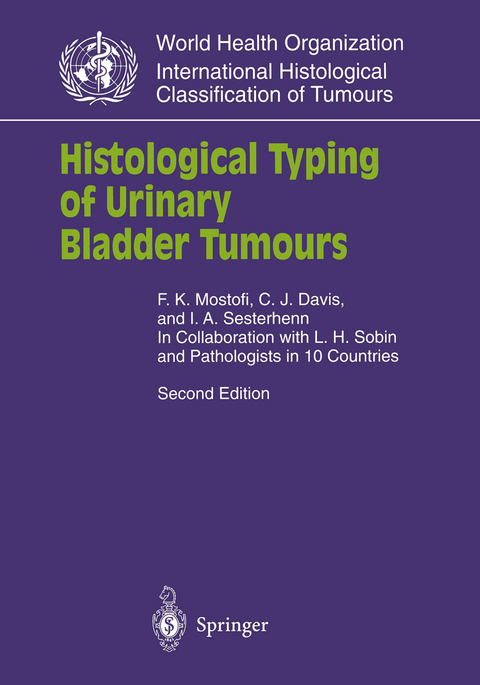
Histological Typing of Urinary Bladder Tumours
Seiten
1999
|
2nd ed.
Springer Berlin (Verlag)
978-3-540-64063-9 (ISBN)
Springer Berlin (Verlag)
978-3-540-64063-9 (ISBN)
In Collaboration with Pathologists in 10 Countries
The 1973 WHO classification of bladder tumours anticipated a probable need for eventual revision of the criteria for diagnosing papillary and flat bladder neoplasia. A workshop sponsored by the WHO consisting of pathologists, urologists, cytologists, oncologists and basic scientists interested in bladder tumours addressed this subject, and after a follow- -up meeting sponsored by the International Society of Urological Pathology, the classification and terminology used in this text were agreed upon. A major change is in the introduction of a new category: papillary urothelial neoplasm of low malignant potential. Many of the tumours previously designated as papillary transitional cell carcinoma, grade I now fall into that category. Another major change is in the designation of flat lesions, and this includes a definition of carcinoma in situ. Furthermore, a number of variant forms of urothelials carcinomas are included as well as new entities not recognized when the 1st edition was issued.
The 1973 WHO classification of bladder tumours anticipated a probable need for eventual revision of the criteria for diagnosing papillary and flat bladder neoplasia. A workshop sponsored by the WHO consisting of pathologists, urologists, cytologists, oncologists and basic scientists interested in bladder tumours addressed this subject, and after a follow- -up meeting sponsored by the International Society of Urological Pathology, the classification and terminology used in this text were agreed upon. A major change is in the introduction of a new category: papillary urothelial neoplasm of low malignant potential. Many of the tumours previously designated as papillary transitional cell carcinoma, grade I now fall into that category. Another major change is in the designation of flat lesions, and this includes a definition of carcinoma in situ. Furthermore, a number of variant forms of urothelials carcinomas are included as well as new entities not recognized when the 1st edition was issued.
Histological Classification of Urinary Bladder Tumours.- Definitions and Explanatory Notes.- Epithelial Tumours of the Bladder.- Non-epithelial Tumours.- Miscellaneous Tumours.- Metastatic Tumours and Secondary Extensions.- Unclassified Tumours.- Epithelial Abnormalities.- Tumour-like Lesions.- TNM Classification of Tumours of the Urinary Bladder.- Illustrations.
| Erscheint lt. Verlag | 26.8.1999 |
|---|---|
| Reihe/Serie | WHO. World Health Organization. International Histological Classification of Tumours |
| Mitarbeit |
Assistent: L.H. Sobin |
| Zusatzinfo | XIV, 104 p. 134 illus. in color. |
| Verlagsort | Berlin |
| Sprache | englisch |
| Maße | 170 x 242 mm |
| Gewicht | 300 g |
| Themenwelt | Schulbuch / Wörterbuch ► Lexikon / Chroniken |
| Medizin / Pharmazie ► Medizinische Fachgebiete ► Onkologie | |
| Medizin / Pharmazie ► Medizinische Fachgebiete ► Urologie | |
| Studium ► 1. Studienabschnitt (Vorklinik) ► Histologie / Embryologie | |
| Studium ► 2. Studienabschnitt (Klinik) ► Pathologie | |
| Schlagworte | carcinoma • Cell • Pathology • TNM staging system • Tumor |
| ISBN-10 | 3-540-64063-0 / 3540640630 |
| ISBN-13 | 978-3-540-64063-9 / 9783540640639 |
| Zustand | Neuware |
| Haben Sie eine Frage zum Produkt? |
Mehr entdecken
aus dem Bereich
aus dem Bereich
Zytologie, Histologie und mikroskopische Anatomie
Buch | Hardcover (2022)
Urban & Fischer in Elsevier (Verlag)
CHF 75,60
Gewebelehre, Organlehre
Buch | Spiralbindung (2024)
Urban & Fischer in Elsevier (Verlag)
CHF 34,95


